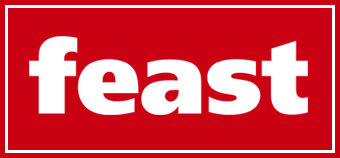As the blockchain space continues to expand, one technical feature has become a major priority for both developers and projects: EVM compatibility. Short for Ethereum Virtual Machine compatibility, this concept allows different blockchains to run Ethereum-based applications, smart contracts, and developer tools without needing significant code rewrites. The rise of the EVM compatibility blockchain has reshaped how developers build, deploy, and scale decentralized applications across various networks.
And the fact that it is compatible with EVM is more of a technical facility; it is also a significant factor in the growth, adoption, and success of the modern blockchain ecosystems. Be it a developer who is about to launch a DeFi platform, an NFT project, or an enterprise use case or the one who decides to build or run their application on an EVM compatible blockchain, the choice can result in the dramatic drop of barriers and the increase of flexibility substantially.
What Is EVM Compatibility?
The Ethereum Virtual Machine (EVM) is the runtime environment for executing smart contracts on the Ethereum network. It interprets and executes code written in Solidity, Ethereum’s most widely used programming language. EVM compatibility means a blockchain can natively support the same smart contracts, programming tools, and interfaces used in Ethereum, making it possible to migrate or deploy applications seamlessly.
An EVM compatibility blockchain behaves like Ethereum from the perspective of the developer. Tools like MetaMask, Truffle, Hardhat, and Remix work out of the box. This allows developers to take advantage of Ethereum’s mature development environment while deploying on a different network that may offer better scalability, faster transactions, or lower fees.
Why Developers Value EVM Compatibility
One of the principal advantages of an EVM-compatible blockchain is its code portability. Developers who have previously created smart contracts for Ethereum can effortlessly deploy them on EVM-compatible chains without needing to alter the core functionality. This is achievable and results in a significant decline in both the time and costs involved in the development process.
In an industry that moves briskly, the ability to reutilize contracts and tools signifies an intellectual property that is essentially unfair for developers. They do not have to study a specific and entirely different programming language or an ecosphere; therefore, the question of EVM compatibility blockchain is one of their priorities which is aimed at the custom experience and development of actual applications instead of contending with the threading of the backend.
Community support is also another trait that stands out. The Ethereum ecosystem has the largest and most active blockchain developer community. Integrating to an EVM-compatible blockchain means the builders can access the same forums, documentation, and libraries that contributed in the first part to the development of Ethereum’s ecosystem. It is a common and shared knowledge find that lowers the problems and increases the innovation.
Integrating with Wallets and dApps More Effectively
An EVM-compatible blockchain also enhances the customer experience and supports Ethereum wallets as well as the other technical provisions. Applications that are developed on this chain can be accessed by MetaMask or WalletConnect without dealing with the configuration of additional settings. The end-users are thus provided with a seamless transition from the current state to the desired one.
This is particularly meaningful for the decentralized applications (dApps)-that are oriented towards Ethereum users without experiencing high gas fees or network difficulties. EVM compatibility makes these projects have the strong likelihood of finding an audience that is already there with the shortest onboarding possible. Furthermore, the interactions with Ethereum-based DeFi protocols are much more straightforward.
Cross-chain operability also becomes simpler. Under the background of smart contracts that are similar to the EVM-compatible networks, the programmer can produce bridges or enable cross-chain swaps without distributing completely different codebases at all.
EVM compatibility advantages
The choice to function in an EVM-compatible blockchain network is a wise tactic. This is because it can allow the combination of various ecosystems, experimentation on a speedy or cheaper chain, and adjustments according to market fluctuations. Regardless of the goals of acquiring users, the EVM compatibility is the essential flexibility needed for performance and ecosystem growth.
Projects no longer have to hitch only to Ethereum, but they can run the program also on various EVM-compatible chains. This not only strengthens redundancies, but it also makes the network more reliable. Furthermore, they can take advantage of the diverse community and liquidity pools, especially in DeFi and NFT areas. As more blockchains adopt EVM standards, the use of this compatibility grows. It serves as a link between ecosystems and provides a consistent developer experience in the decentralized world.
Summary
The EVM compatibility blockchain represents the new epoch of developers designing and implementing blockchain solutions. With the smooth code portability, a robust tool, wallet, and Ethereum’s large developer base that is integrated, EVM compatible chains are the primary drivers of the low barrier to entry and speeding of innovation. For developers who are on the way of creating efficient, scalable, and user-friendly applications, the EVM compatibility is not only a lure it is the competitive edge in the blockchain industry today.



